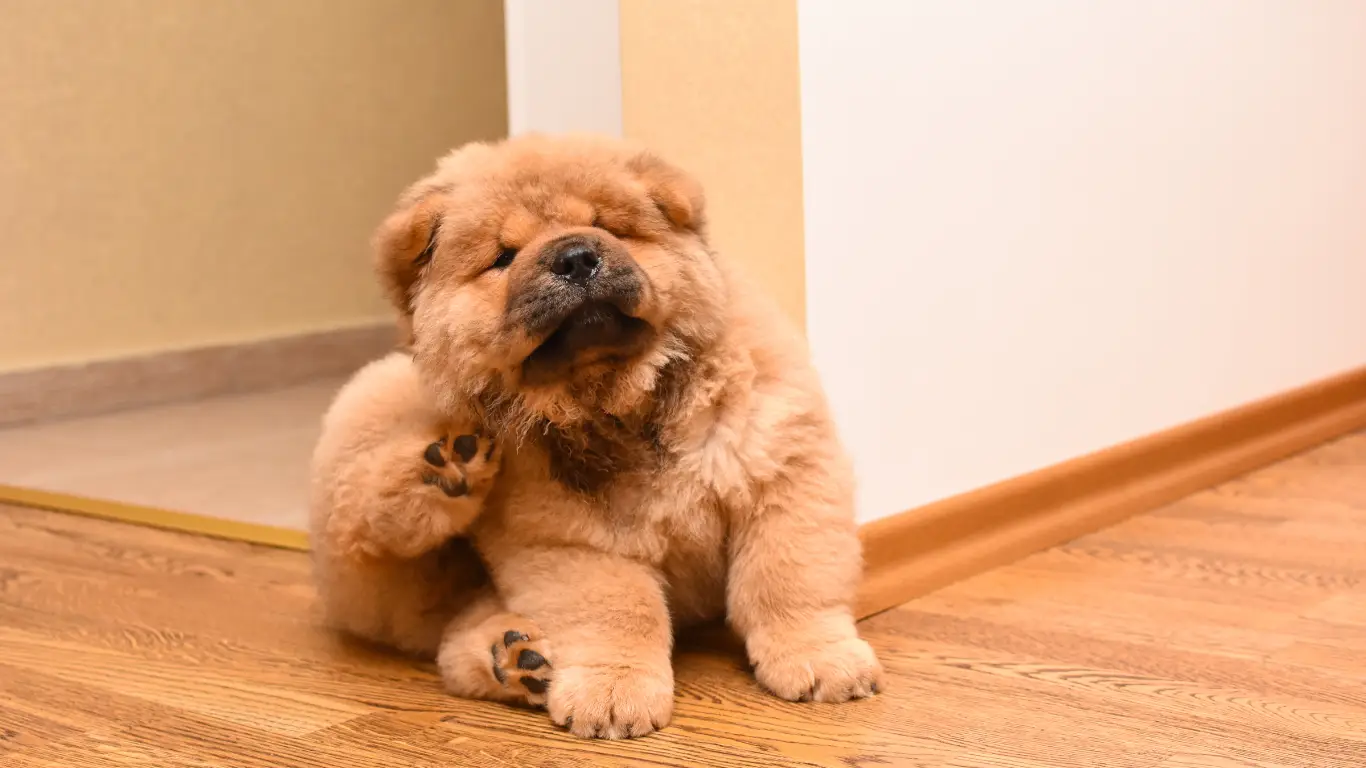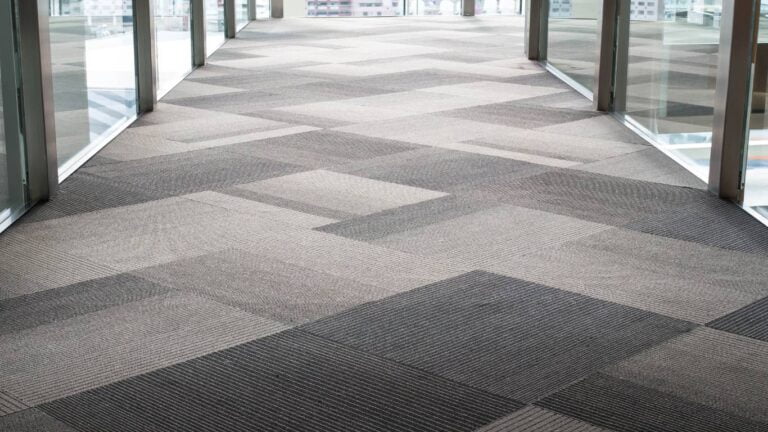When you know how to get rid of fleas in your house, you can maintain a healthy and comfortable living environment. These parasitic pests not only pose a significant health risk to your pets but can also infest various household items and spaces. In this comprehensive guide, we’ll explore the origins of fleas, their life cycle, and the factors that attract them to your home. We’ll also provide effective strategies for eradicating them from your house and yard, as well as preventive measures to keep them at bay. Whether you’re dealing with a minor infestation or a severe one, our tips will help you reclaim your home from these unwelcome intruders.
Understanding Flea Origins
Fleas are parasitic pests that pose a significant health risk to us, our pets, and our overall household environment. They’re attracted to light, heat, movement, and carbon dioxide, which help them locate suitable hosts for feeding.
Research shows that a staggering 93% of fleas will move towards a light source within 40 minutes when in darkness. They’re particularly drawn to green and yellow light wavelengths, which they perceive more effectively than others.
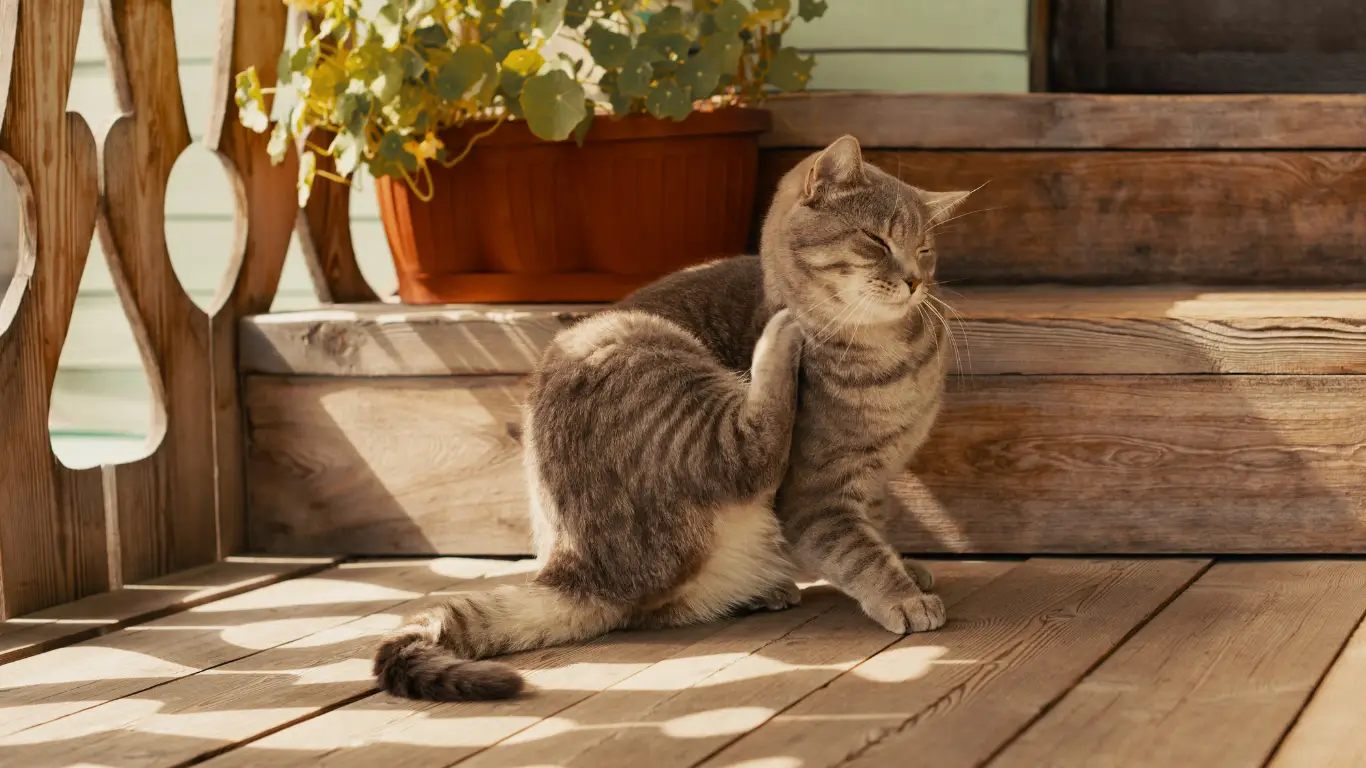
Identifying Common Sources of Fleas
Fleas typically live on animal hosts. You can also find them in various household items such as bedding, rugs, blankets, and plush toys. They’re also known to inhabit areas where pets frequently rest, like kennels or favourite outdoor spots.
Fleas can be brought indoors by mice, humans, or even on secondhand items. They prefer warm, humid places and can often be found in trees, shrubs, and tall grass, especially during the warmer months.
Flea Life Cycle Explained
The life cycle of a flea comprises four stages: egg, larvae, pupa, and adult. Fleas lay small, white eggs in bunches of about 20 in the fur of their host. These eggs fall off as the host moves, spreading throughout the environment.
The eggs hatch into larvae within two days to two weeks, depending on environmental conditions. The larvae then feed on pre-digested blood and other organic debris for 4 to 18 days. After this, they spin silk cocoons and enter the pupal stage.
This stage can last from a few days to several months, depending on factors like temperature and humidity. Once the adult fleas emerge from the pupal stage, they start searching for food. They typically feed on the blood of their host.
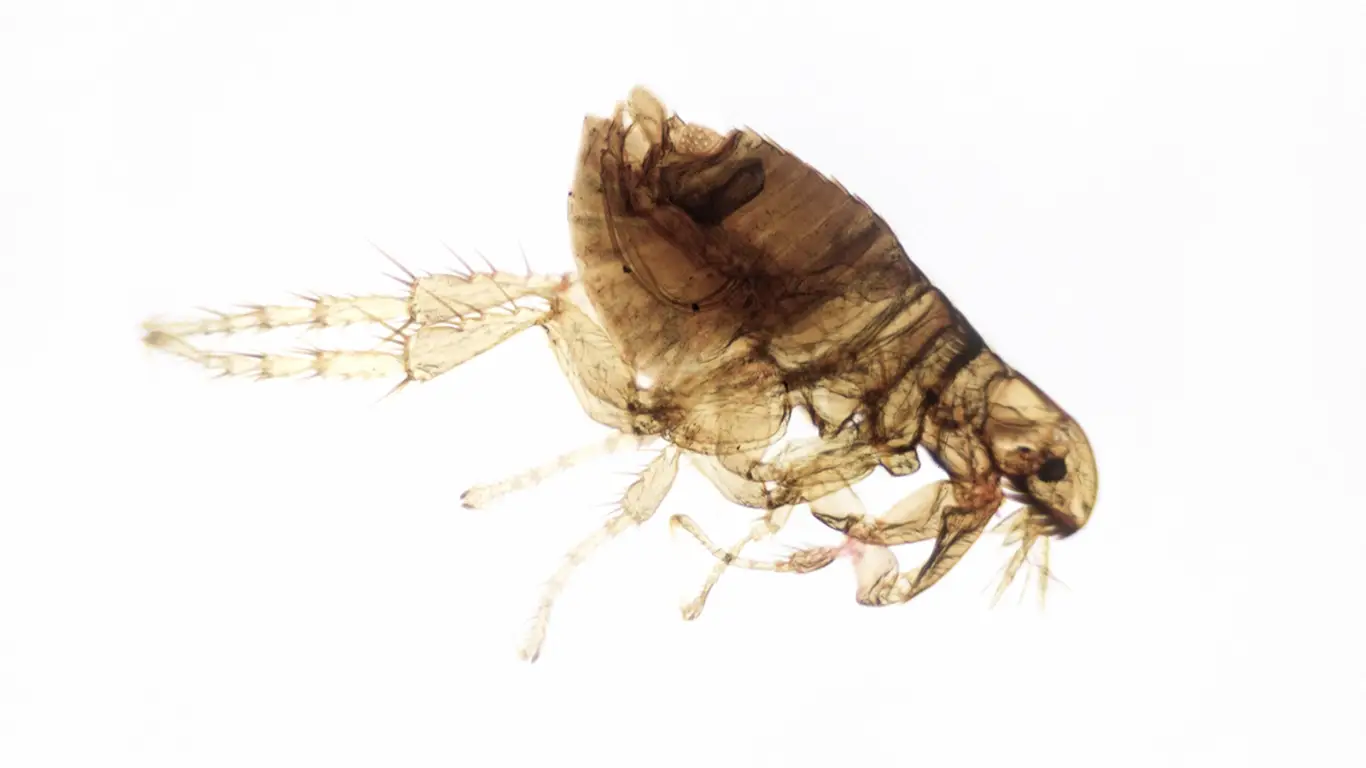
Factors Attracting Fleas to Homes
Fleas are attracted to our homes by various factors, including light, heat, and carbon dioxide. They’re positively thermotactic, meaning they’re drawn to and stimulated by heat. The ideal temperature for flea larvae and adult fleas to develop is between 70 and 85 degrees Fahrenheit.
Fleas also have an excellent sense of smell, which enables them to detect trace amounts of carbon dioxide in the air. This helps them locate potential hosts nearby. Fleas are most prevalent in warmer climates, but the use of central heating means they can be present all year round in most countries.
Timeline of Flea Infestations
Fleas can lay up to 50 eggs per day, which means infestations can spread rapidly. Regular treatments are crucial to fully eradicate the problem. However, if you miss a treatment schedule, it can lead to another infestation.
Fleas can remain inactive for a long time, waiting for the weather to warm up or the right host to pass by. To eliminate fleas, you need to treat the environment properly. This includes vacuuming regularly and thoroughly washing bedding and toys in hot soapy water to remove eggs, larvae, and pupae.
Regular cleaning of soft surfaces, like pet bedding, cushions, and blankets, is also important. This helps to prevent fleas from establishing a foothold in your home.
Finding Flea Hotspots in Your Home
Fleas are tiny, wingless insects that survive by feeding on the blood of animals or humans. Their flat bodies let them move swiftly along surfaces. They can easily cling to their hosts using the tiny hairs on their bodies.
These creatures are particularly drawn to warm, moist areas. This makes your home an ideal breeding ground.
Common Indoor Areas for Fleas
Fleas aren’t picky when it comes to choosing a place to settle in your home. They’re often found in low-traffic carpet areas, pet bedding, and household furnishings. These locations provide a safe haven for fleas to feed and reproduce undisturbed.
Fleas are also attracted to sofa cushions, upholstery, and other soft furnishings throughout your home. Carpets and rugs, filled with debris, provide a rich feeding ground for these pests.
Signs of Flea Activity in Different Rooms
Spotting flea activity in your home can be tricky due to their small size and elusive nature. However, there are telltale signs to look out for. Flea eggs, for instance, are small, oval white specks that resemble grains of salt.
You can find these in places your pets frequent such as beds, bedding, crates, couches, chairs, carpeting, floor cracks or crevices, and corners. Flea bites, which appear as small, red, raised bumps typically around your ankles, are another sign of their presence.
Checking Pets and Pet Areas
Pets are often the main carriers of fleas into homes. When your pet ventures outside, fleas may latch onto their fur, especially on their underbody. They then breed rapidly, laying eggs inside your pet’s fur which then fall off and hatch more fleas in your home.
It’s crucial to regularly check your pets and their bedding for signs of fleas. Look for flea dirt, which are specks of brown or black dots that look like pepper. This is actually flea faeces that has turned dark from the blood they’ve consumed.
Hidden Spots Often Overlooked
Fleas are experts at hiding. They prefer dark, warm places to lay their eggs, including your carpeting. Running your hands or a comb through the fibres can reveal hidden eggs and droppings.
Flea larvae spin a cocoon around themselves using their saliva along with any other dirt and debris that they can find. These cocoons are well-camouflaged within the environment and can be easily overlooked. Flea pupae can stay in their cocoons for months before maturing and infesting your house or pet weeks later.
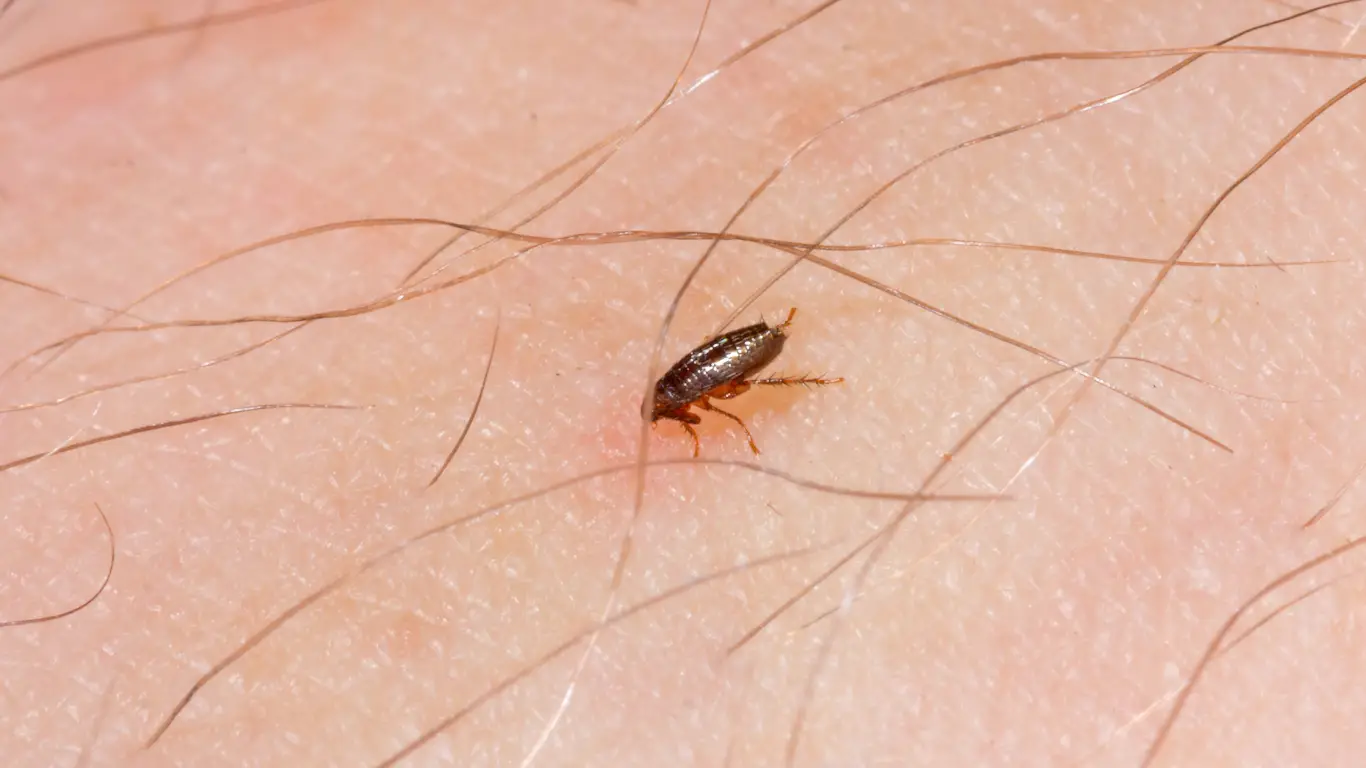
Eradicating Fleas from Your House
Fleas are a common annoyance, especially if you’ve got pets. These tiny, agile creatures reproduce quickly, making them a tough pest to get rid of. But, with the right strategies and a bit of persistence, you’ll be able to successfully eliminate these unwelcome intruders from your home.
Choosing Effective In-House Flea Treatments
To tackle a flea infestation, you’ll need to treat both your pet and its living environment simultaneously. Fleas go through multiple life stages, and if you’re seeing adult fleas, it’s likely that all these stages are present in your home.
Choose an insecticide that contains both an adulticide, which kills adult fleas, and an insect growth regulator, which targets the eggs, larvae, and pupae. Aerosol sprays are often more effective than foggers as they can be directed under beds and other hard-to-reach areas. It’s important to avoid contact with the insecticide until it’s completely dried.
DIY Solutions vs. Professional Extermination
The severity of the infestation will determine whether you can handle it yourself or if you’ll need professional help. For minor infestations, a thorough clean and the use of topical flea medications for your pet might be enough. However, severe infestations may require the services of professional flea exterminators.
Cleaning Strategies That Eliminate Fleas
Regular and thorough cleaning is a key strategy in eliminating fleas. Vacuum all floors, upholstery, and mattresses, paying special attention to areas where your pet spends a lot of time.
Using a steam cleaner on carpets and upholstery, including your pet’s bedding, can also be effective. All bedding should be washed in hot water and dried at the highest heat setting.
If the infestation is severe, you might need to dispose of old bedding and replace it.
Preventing Future Infestations
Prevention is always better than cure. To prevent future infestations, keep a clean home environment. Regularly vacuum carpets, rugs, cushions on chairs, and sofas, and always empty the vacuum bag outside when finished.
In your garden, make it less appealing to fleas by mowing frequently, avoiding over-watering, treating dog runs with insecticides, and raking thoroughly to remove any debris. Fleas prefer shaded, humid, and warm areas, so try to expose as much of your garden to sunlight as possible.
Keeping rodents and other animals away from your home is also important. Store food in tight-sealing containers, remove brush and clutter, seal holes in your home, and keep tight lids on compost and rubbish bins.
Fleas can survive year-round if there’s an animal to feed on, so it’s essential to protect your pets as well. Regularly check your pet for fleas using a flea comb and keep their bedding clean.
Treating Fleas in the Yard
Fleas are tiny parasites that feed on the blood of warm-blooded hosts, including pets and humans. They’re most active during warmer months and can cause significant harm to your pets and even to you.
You’ll often find fleas in your yard, especially in moist, humid, and shady conditions. They love to hide in overgrown grass and debris, turning your yard into a potential breeding ground.
Natural and Chemical Products That Kill Yard Fleas
There’s a range of natural and chemical products that can help you get rid of fleas in your yard. Cedar mulch acts as a repellent for fleas. Another natural solution is the use of nematodes, microscopic eelworms that feed on flea larvae.
Diatomaceous earth is another effective product. This powder, made from the fossilised remains of aquatic organisms, can damage a flea’s exoskeleton and dry out its eggs. However, it needs specific conditions to work effectively, including humidity of less than 55%, no recent rain, and no sprinkler use.
You can also create homemade solutions using natural deterrents like neem oil, apple cider vinegar, cedar oil, and eucalyptus oil to kill fleas.
Landscaping Tips to Discourage Fleas
How you maintain your yard can significantly influence the presence of fleas. Regularly mowing your grass can disrupt the fleas’ favourite hiding places. However, be careful not to cut your grass too short as it may disrupt spiders, which are natural predators of fleas.
Fleas also like to hide in undisturbed areas. Piles of brush, leaves, and other debris around your trees and bushes can create perfect habitats for them. By removing excess organic material and cleaning up plant beds, you can discourage fleas from setting up a colony.
Regular Maintenance to Keep Fleas at Bay
Keeping your yard tidy by eliminating debris and clutter is key in keeping fleas at bay. This reduces habitats for fleas to hide and reproduce.
Regularly raking leaves, branches, and rubbish disrupts a flea’s habitat. It ensures that any treatment applied will make contact with the ground. Maintaining a healthy lawn can also help as it eliminates the environmental conditions that invite fleas.
Washing your pets and any fabrics they come in contact with regularly can also help control flea populations inside the home.
Safe Practices for Pet and Child-Friendly Yards
When treating your yard for fleas, it’s important to consider the safety of your pets and children. Fleas can enter your yard through animals, including pets and wildlife like deer and rodents. Keeping your grass trimmed, maintaining your irrigation system, and pest-proofing your house by sealing holes can help keep fleas at bay.
Fleas prefer to live in soft, comfy places where you and your pets like to sit, sleep, or snuggle. Therefore, keeping these areas clean and regularly treated can prevent flea infestations.
Special Focus: Removing Fleas from Beds
Fleas can infiltrate our beds through pets, infested clothing, or even wildlife. While they need a host to survive, they can temporarily reside in your bed, leaving behind tiny black specks.
Steps to Clean Beddings and Mattresses
Start by vacuuming thoroughly to remove dirt, adult fleas, and their eggs. Handheld vacuums are particularly effective, but a standing vacuum with an upholstery attachment works too. Empty the vacuum immediately after use to prevent fleas from surviving inside it.
If you find signs of fleas in your sheets and pillowcases, such as small, discoloured bumps or white, oval-shaped eggs, wash them in hot water every few days to ensure any hatched eggs are eliminated.
But it’s best to get a professional mattress cleaner who can steam clean the mattress and ensure all of the eggs are destroyed.
Suitable Products for Flea Treatment in Bedding
For severe infestations, steam cleaning your bed can kill adult fleas, larvae, and some eggs. Vacuum your bedding first to remove any grime. Flea powder is useful if fleas have spread to your carpet. Alternatively, create a homemade solution by mixing equal parts water and vinegar. Spray this solution, then sprinkle salt over the area and leave it overnight. The salt helps dry out the area, aiding in flea and larvae removal. Vacuum the next day to clear away the dead fleas.
Regular Inspection and Cleaning Routines for Bedrooms
Maintaining regular cleaning routines is crucial for preventing and controlling flea infestations. Make it a habit to vacuum and steam clean your bed and bedroom. Don’t forget to wash long window curtains, as fleas can climb into the fabric from the floor and lay eggs there.
Addressing Flea Bites and Related Allergies
Flea bites can cause small, discoloured bumps on the skin, often appearing in straight lines or clusters. Pets may scratch the infected area due to an allergy to flea saliva. Fleas can spread diseases, unlike bed bugs, which are usually brought into homes through items like luggage, furniture, clothing, and bedding. Regular cleaning and inspection can help manage these issues and maintain a flea-free bedroom.
Wrapping Up Your Flea-Free Journey
Combating fleas in your home requires commitment and diligence. Understanding their lifecycle and behaviours is a crucial first step. Begin with identifying the sources of infestation and sealing off flea hotspots in your house, yard, and bedding.
Choose the right treatment method based on the severity of your situation, which could range from DIY solutions to enlisting professional help. The key is regular cleaning and maintenance to prevent future infestations.
Remember, your fight against fleas is more of a marathon than a sprint. So, keep up the good work and enjoy the peace of mind a flea-free home brings!

